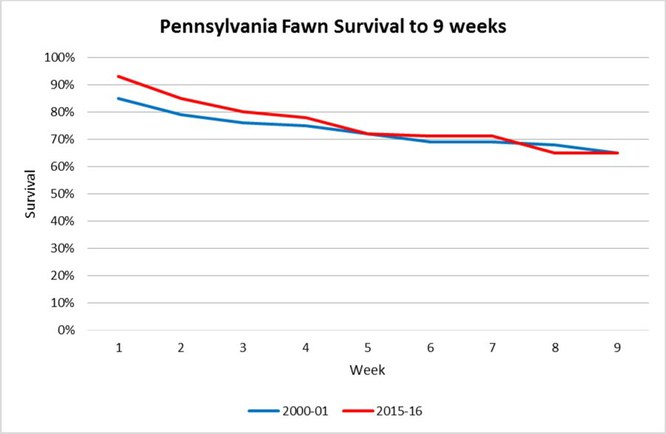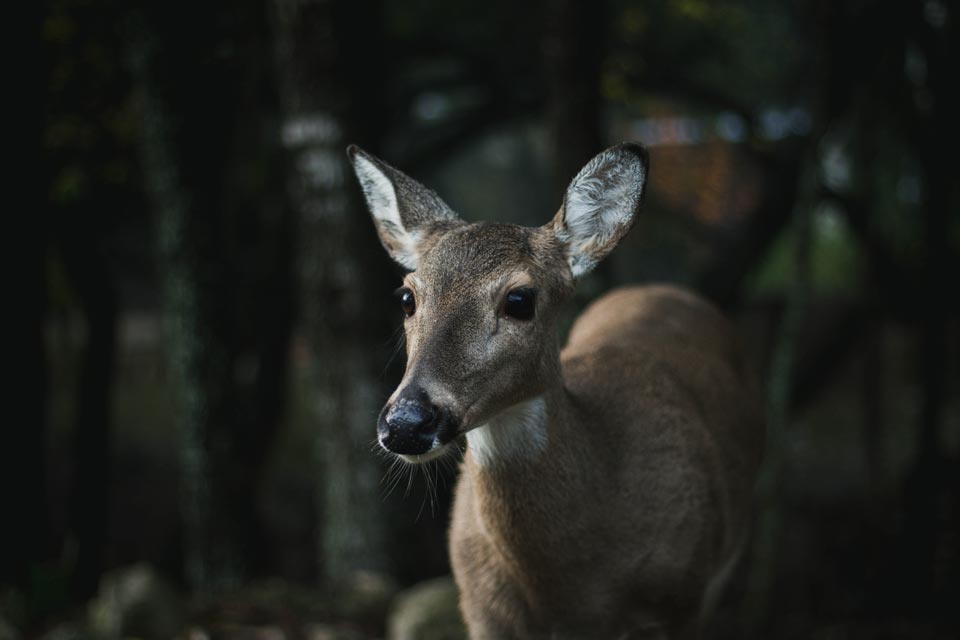The 2016 fawning season is a distance memory. We are back to regimented schedule the changing season brings. So what was 2016 like? Well, it was different than 2015. First, we captured more fawns – 56 in 2016 compared to 42 in 2015. Second, survival was higher. Through 9 weeks of age, survival was 0.74 compared to 0.52 last year.
As so often happens with wildlife field studies, a simple cause and effect explanation is not obvious. For example, this year we captured fawns on a larger area surrounding the state forests in the south. This could explain some of the increase in survival as more fawns were captured outside the state forests and may have been exposed to less predation. However, fawn survival on the northern study area where fawns were captured in the same areas increased as well. Maybe better physical condition of the mothers due to a milder winter might explain higher survival on both study sites.
Regardless of the cause, one thing is certain – annual variation like this is why we always look at multiple years of data before making conclusions.
If we combine the first 2 years of this study and compare it to the 2 years from the 2000-2001 study, we find that 9-week survival rates are very similar.

Predators appear to be the primary cause of mortality again this year. At the moment, predators are confirmed to have killed 5 of the 14 fawns that died and are suspected in 5 other deaths. If 10 of 14 deaths are due to predators, this will mirror results from the 2000-2001 study as well.
We will check back on our overall fawn survival around the New Year. By that time, all of our fawns will have had a chance to survive to 26 weeks and the hunting season. How many will make it?
PGC Deer and Elk Section
If you would like to receive email alerts of new blog posts, subscribe here.
And Follow us on Twitter @WTDresearch

